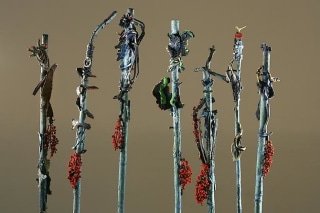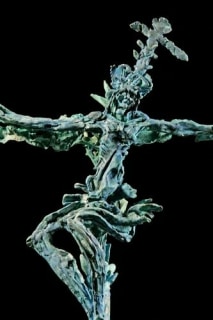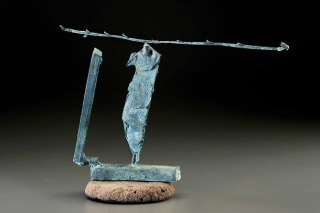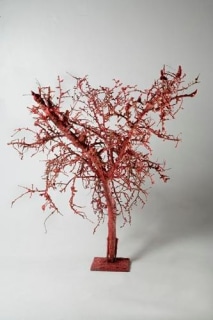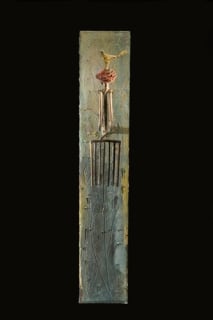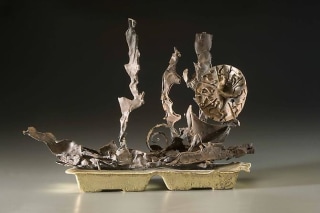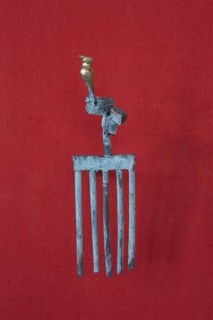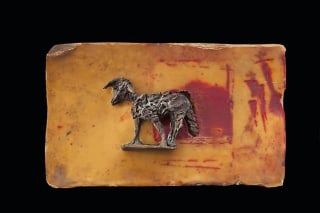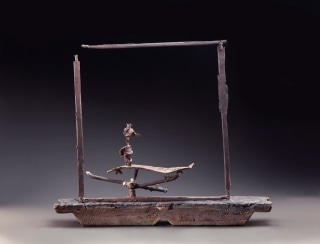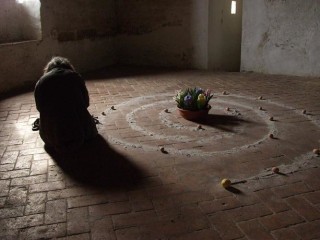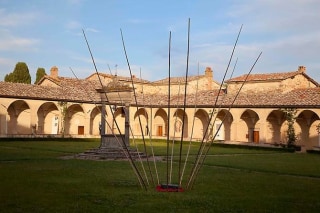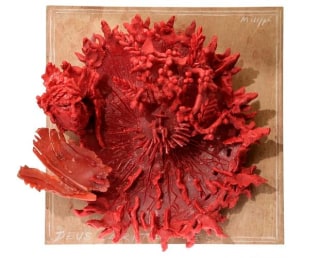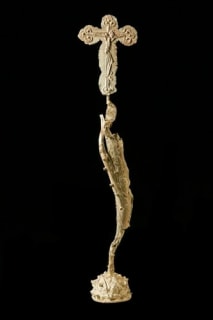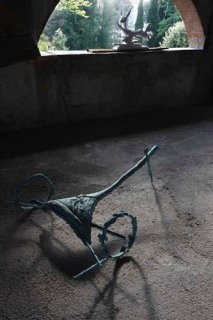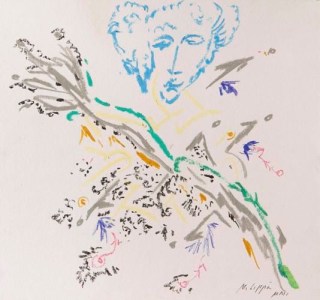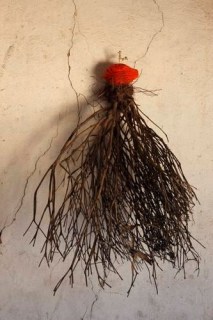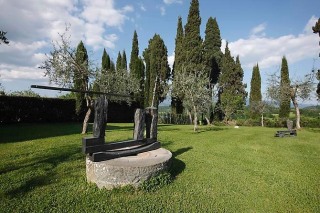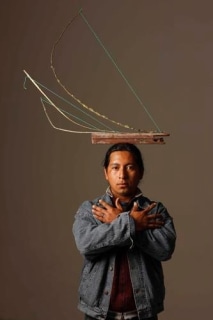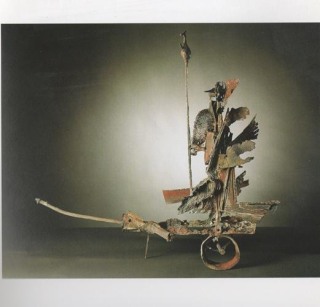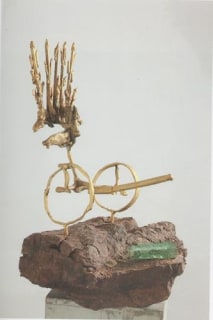Massimo Lippi, poet and artist, was born in Ponte a Tressa, Siena in 1951. He has published four poetry books, and is referenced in “Nuovi Poeti Italiani ”, Einaudi 1982. As his University professor Enzo Carli said, Massimo Lippi is a talented artist in words and stone. The Art Curator Amnon Barzel calls Lippi "Une magicien de la terre" in his ground breaking exhibition in 2000 in the Archaeological Museum of Siena, Santa Maria della Scala, where a missing link is created between the profane Etruscan past and the poetic and spiritual present found in Lippi’s terracotta and bronze chariots.
Much of Lippi’s works are created from “object trouvé” but unlike Duchamp who chose his refound “object” Lippi does not look for anything, he simply picks up whatever surrounds him within his boundaries of the Val d’Arbia, the rolling clay hills that lie just a few Km’s south of Siena in the district known as the”Crete Senese”.
Lippi has created many important commissions and works of sculpture, in Italy and abroad. He has held teaching positions at both the Universities of Carrara and Macerata and is currently professor of Sculpture at the "Accademia di Belle Arti" in Florence.
He was also a visiting professor of sculpture at SUNY University at Buffalo and at Southern Methodist University in Dallas, Texas. He participated in the International Symposiums in Lahr, Germany and in Vitoria, Spain. He has had many exhibits in both national and international museums, most notably in the Modern Museum of Tokyo. Lippi is best known for his bronze sculptures, and most recently (2000-2006) he has executed the bronze portal for the Basilica of " S.Domenico" Siena and a bronze Crucifix for the "Duomo" of Siena. In 2011 he participated in the competition for a pulpit within the octagon of the High Altar in the Cathedral of Florence, commissioned in 1366 but never assigned . Models were submitted by Lippi, Paladino and the Architect Botta, but all have so far been refused!

